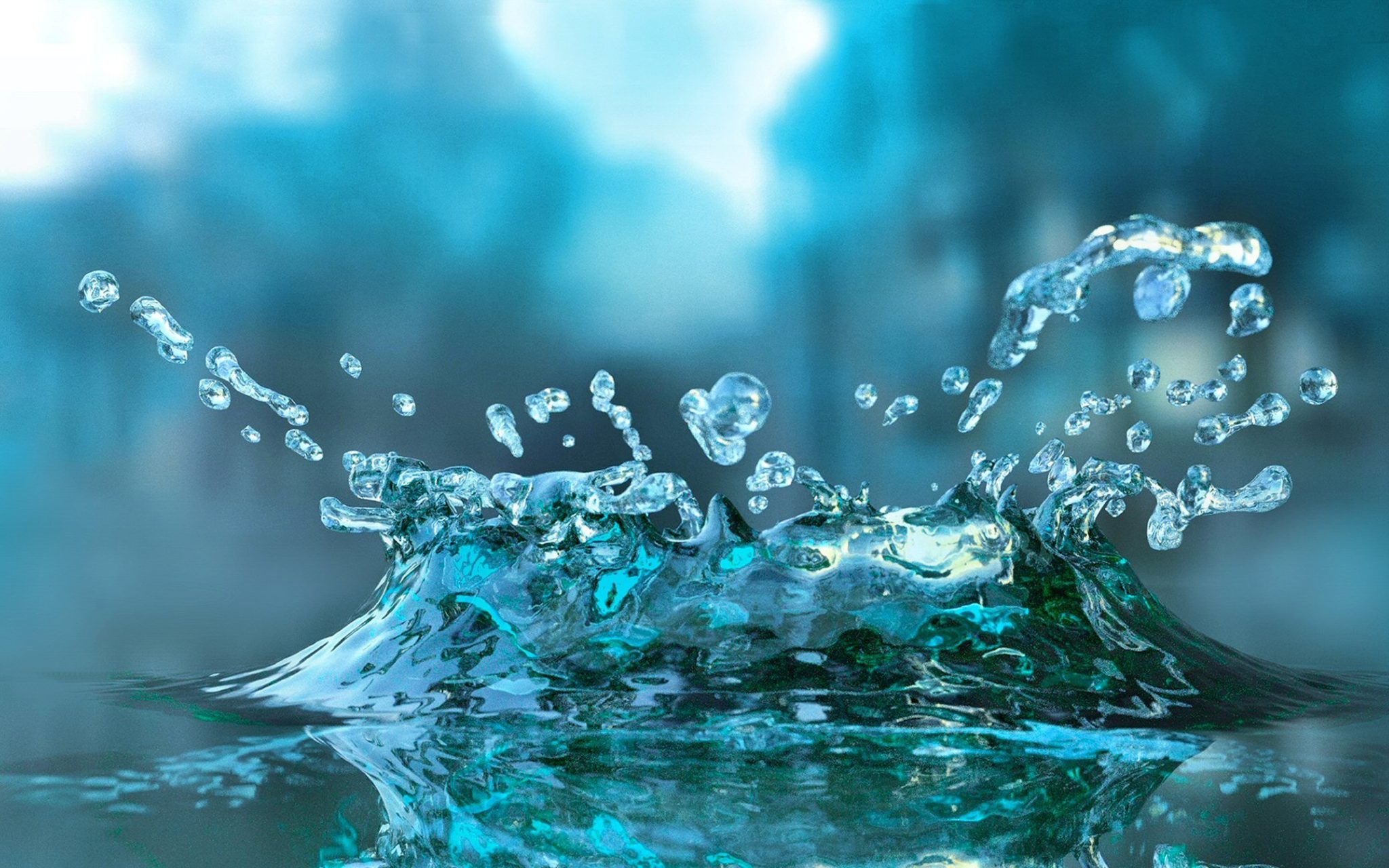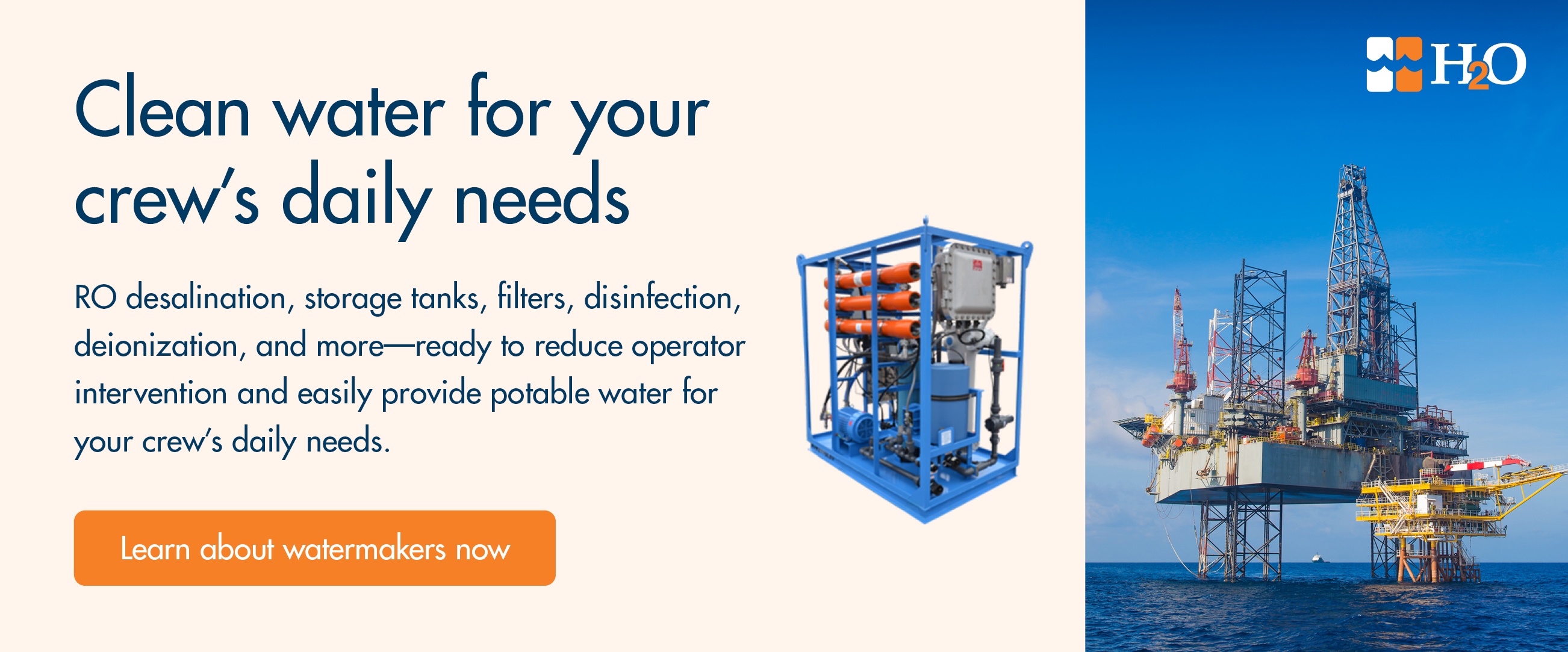
Offshore platforms and drilling rigs are in essence a small community of people living and working at sea. Just like with community water systems reliability and safety are of vital importance. Your watermaker helps meet the need of your floating community, which is often located hundreds of miles from an alternative source of fresh, safe water. As this is the case, your watermaker is as important to you as any piece of production equipment. Watermaker manufacturers realize this and build water treatment systems that are built to last.
This doesn’t mean that your watermaker won’t need occasional checkups and regular preventative maintenance from time to time. Knowing how to perform some easy fixes, solutions, and maintenance on your own can save you money and keep you covered in the event that your watermaker needs attention while you’re out at sea.
The alternative can present steep consequences. Ignoring the needs of your watermaker or failing to give it regular once-overs could cost you. For example, improperly maintaining your unit can cause it to wear out before its time, a situation that could prematurely cost you up to $150K.
While that may sound stark, the solution is simple. Watermakers tend to require only basic maintenance. As long as you have what you need to take care of it on hand, you should be good to go.
Keep These Parts in Stock for Your Safety
Sometimes, maintaining your watermaker doesn’t depend solely on the health of larger, more expensive parts. Instead, simply making sure that you have the right smaller spare pieces in stock—and using them strategically—may be all you need.
Here are the parts you’ll want to keep in stock and the information you’ll want to have handy for your watermaker—and your peace of mind:
Cartridge filters
These types of filters have varying sizes and filtration grades—e.g., 1- or 10-micron versions—to choose from to best suit your watermaker’s filter housings. They protect your watermakers pumps and membranes by removing particulate matter in the seawater before it can clog membrane filters and damage costly high pressure pumps.
Bag filters
Bag filters differ from cartridge filters in several ways. For example, bags tend to filter to a lesser grade and be less expensive, but cartridges have significantly higher filtration surface areas and can filter to much finer levels. It’s always best to consult your manufacturer’s manual to see which types of filters work best with your specific unit.
Low- and high-pressure pumps and reliable gauges
The low- and high-pressure pumps operating as part of your watermaker help manage the flow rate of the seawater to your watermaker. Checking in on the pressure and flow rate gauges to make sure they’re operating properly will help extend their life. Often times a reduction in flow or fluctuating pressures can be a sign it’s time to do a little maintenance. If not small problems can turn into the need for a costly complete pump replacement.
Disinfection, cleaning chemicals, and dosing pumps
The dosing pump in your watermaker helps distribute essential chemicals into the watermaker’s fresh water to aid with disinfection and corrosion control. These essential substances may include food-grade sodium hypochlorite, RustFreee, calcite.
Your filters do a great job removing the majority of dirt, sand and algae in the seawater but they aren't perfect. The desalination process also concentrates the seawater so it can clog or “foul” the membranes. Regular cleaning with cleaning supplies remove this fouling and restore membranes to their full capacity. If you are going to shut down your watermaker for more than a few days its a good idea to have some membrane preservatives on hand to prevent bacterial growth.
Spare membranes and Seals
The membranes in your watermaker help filter out tiny salt particles in the seawater to produce fresh water with low salinity. They will need replacing every four months to two years depending on how dirty the seawater is in your area. When replacing membranes you should always replace the o-rings and other seals and use a silicone lubricant rated for potable water to make sure you dont have any leaks,
The manual for your watermaker
Even though your watermaker is built to be durable and easy to maintain, it’s still a complex piece of machinery. It’s always a good practice to keep the manufacturer manual nearby for easy reference. As a bonus, the manual will have troubleshooting tips, resources for further information, and specific information about replacement parts. If you need this information quickly, you likely don’t want to have to be searching online—particularly when the manual provides this information in an easy-to-read way.
Contact info for nearby experts
In the majority of cases, you’ll be able to care for your watermaker simply with routine maintenance and easy, infrequent fixes. However, there will always be times where your issues may seem more complicated. Keeping the contact information for friendly, accessible experts near your watermaker will make troubleshooting or fixing urgent problems much less intimidating.
Reach Out to H2O for More Information
Your watermaker should run well for a very long time with simple maintenance practices. With a few spare parts on hand, you should be able to keep it working without much effort. Just having these spare parts present and accessible on your rig will go a long way toward helping with any stressful, immediate fixes you need to manage.
Whenever you need assistance to keep your watermaker running well, the water treatment system experts at H2O LLC are ready to help, and our webstore is always open to ensure that you have the equipment and parts that you need. Program our contact information into your phone and give us a call today to learn how we can serve you better.

